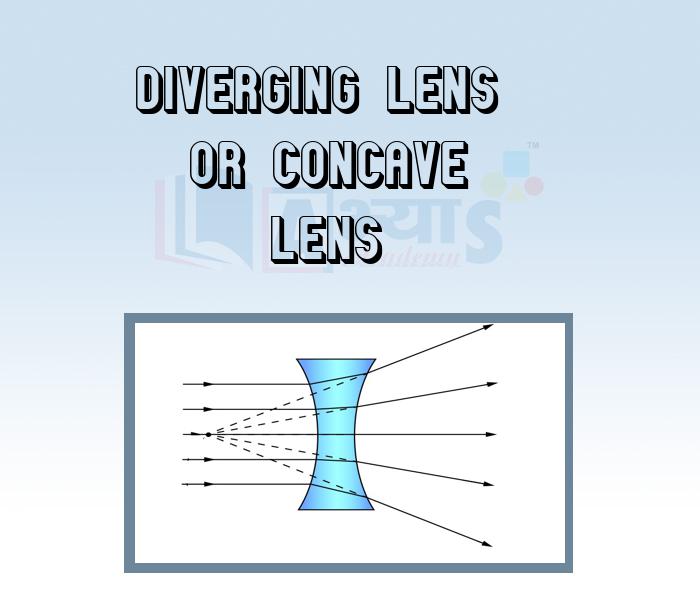Diverging Lens or Concave Lens










Human Eye
Human Eye: Its lens is a transparent structure made of proteins. The focussed image falls on a screen behind the lens, called the retina. Retina consists of two types of photoreceptor cells:
I. Rod cells: They are responsible for black and white vision, night vision and peripheral vision. They are more in number.
II. Cone cells: They are responsible for colour vision. They are less in number
The retina sends electrical signals to the brain through the optic nerve so that we perceive objects. The cornea is a transparent spherical structure that refracts light into the eye. The iris is a dark muscular assembly that controls the size of the pupil, the opening that regulates the amount of the light entering the eye. When the light is very bright, the pupil becomes very small, while in a dim light it opens. up fully through the relaxing of the iris. The light through the cornea and pupil falls on the lens, which focuses it on the retinal screen. The retina has an enormous number of light-sensitive cells. These get activated upon illumination and generate electrical signals that are sent to the brain through the set nerves. The brain interprets these signals as the sense of light.
Students / Parents Reviews [10]
My experience with Abhyas academy is very good. I did not think that my every subject coming here will be so strong. The main thing is that the online tests had made me learn here more things.

Hiya Gupta
8thBeing a parent, I saw my daughter improvement in her studies by seeing a good result in all day to day compititive exam TMO, NSO, IEO etc and as well as studies. I have got a fruitful result from my daughter.

Prisha Gupta
8thAbhyas Methodology is very good. It is based on according to student and each child manages accordingly to its properly. Methodology has improved the abilities of students to shine them in future.

Manish Kumar
10thIt has a great methodology. Students here can get analysis to their test quickly.We can learn easily through PPTs and the testing methods are good. We know that where we have to practice

Barkha Arora
10thIt was a good experience with Abhyas Academy. I even faced problems in starting but slowly and steadily overcomed. Especially reasoning classes helped me a lot.

Cheshta
10thI have spent a wonderful time in Abhyas academy. It has made my reasoning more apt, English more stronger and Maths an interesting subject for me. It has given me a habbit of self studying

Yatharthi Sharma
10thA marvelous experience with Abhyas. I am glad to share that my ward has achieved more than enough at the Ambala ABHYAS centre. Years have passed on and more and more he has gained. May the centre flourish and develop day by day by the grace of God.

Archit Segal
7thOne of the best institutes to develope a child interest in studies.Provides SST and English knowledge also unlike other institutes. Teachers are co operative and friendly online tests andPPT develope practical knowledge also.

Aman Kumar Shrivastava
10thIt was good as the experience because as we had come here we had been improved in a such envirnment created here.Extra is taught which is beneficial for future.

Eshan Arora
8thMy experience was very good with Abhyas academy. I am studying here from 6th class and I am satisfied by its results in my life. I improved a lot here ahead of school syllabus.
